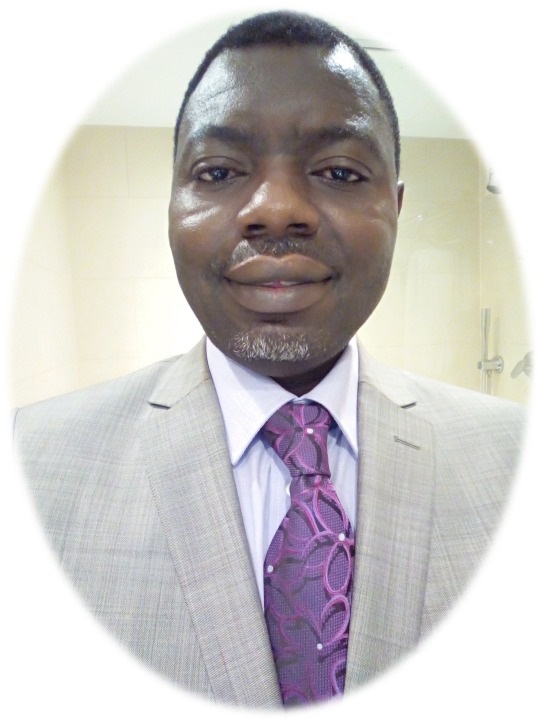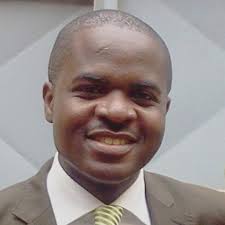Pneumonie lipidique exogène du nourrisson atteint de maladie de Hirschsprung: aspects radiographiques et tomodensitométriques.
DOI:
https://doi.org/10.55715/jaim.v12i4.171Keywords:
pneumonia, oil, child, x-ray, scanner.Abstract
Objectives : Determine the prevalence of exogenous lipid pneumonia, study the indications for imaging examinations in and describe its radiological and computed tomography characteristics.
Patients and method : A six-year retrospective multicenter study involved 14 infants with Hirschsprung's disease treated with paraffin oil and with chronic non tuberculous pneumonia. They benefited from chest x-rays and / or tomodensitometry with density measurements.
Results : The clinical picture is unequivocal in the type of respiratory distress in a context of malnutrition with chronic hypoxia, weight loss or stagnation, leading to imaging examinations. The lesions are uniform in appearance and distribution, with non-airy clarity on x-ray and fatty hypodensities, posterior in 80-100% of cases, reaching at least two lobes on CT. The prevalence is 10.85% in our population.
Conclusion : The diagnosis of PLE should be made in infants with Hirschsprung's disease who are treated with paraffin oil as soon as they develop pneumonia without obvious biological signs. CT allows to highlight the characteristic fatty hypodensity within the lesions.
RÉSUMÉ
Objectifs : Déterminer la prévalence de la pneumonie lipidique exogène, étudier les indications des examens d’imagerie et décrire ses caractéristiques radiologiques et tomodensitométriques.
Patients et méthode : Une étude rétrospective multicentrique sur 6 ans, a concerné 14 nourrissons atteints de maladie de Hirschsprung, traités à l’huile de paraffine et présentant une pneumopathie chronique non tuberculeuse. Ils ont bénéficié de radiographies du thorax de face et / ou de tomodensitométries avec mesures de densité.
Résultats : Le tableau clinique est univoque à type de détresse respiratoire dans un contexte de malnutrition avec hypoxie chronique, perte ou stagnation pondérale, conduisant aux examens d’imagerie. L’aspect et la distribution des lésions sont uniformes, faites de clartés non aériques à la radiographie et d’hypodensités graisseuses, postérieures dans 80 à 100% des cas et atteignant au moins deux lobes à la TDM. La prévalence est de 10,85% dans notre population.
Conclusion : La PLE doit être évoquée chez le nourrisson atteint de maladie de Hirschsprung et traité à l’huile de paraffine, dès la survenue d’une pneumopathie sans signes biologiques évidents. La TDM permet de mettre en évidence l’hypodensité graisseuse caractéristique des lésions.
Downloads
References
2. Ukkola-Pons E, Weber-Donat G, Teriitehau C, Calcin P, Baccialone J, Vaylet F, Jeanbourquin D, Potet J. Imagerie de la pneumopathie huileuse. Feuillets de Radiologie, 2010; 50: 1 3-9.
3. Brimblecombe FSW, Crome L and Tizard JPM. Oil aspiration pneumonia in infancy. Arch. Dis. Child, 1951; 126: 141.
4. Elston CW. Pneumonia due to Liquid Paraffin: With Chemical Analysis. Arch. Dis. Child, 1966; 41: 428.
5. Meltzer E, Guranda L, Vassilenko L, Krupsky M, Steinlauf S, Sidi Y. Lipoid pneumonia: a preventable complication Isr Med Assoc J 2006; 1: 33-35.
6. Balakrishnan S. Lipoid pneumonia in infants and children in South India. Br Med J 1973; 4: 329-31.
7. De Oliveira GA, Del Caro SR, Bender Lamego CM, Mercon de Vargas PR, Vervloet VE. Radiographic plain Þ lm and CT findings in lipoid pneumonia in infants following aspiration of mineral oil used in the treatment of partial small bowel obstruction by Ascaris lumbricoides. Pediatr Radiol 1985; 15: 157-60.
8. Hoffman LR, Yen EH, Kanne JP, Effmann EL, Gibson RL, Van Niel CW. Lipoid pneumonia due to Mexican folk remedies: cultural barriers to diagnosis. Arch Pediatr Adolesc Med. 2005; 159 (11):1043-8.
9. Azevedo Sias S, Oliveira Caetano R, Dutra Comarella J, de Oliveira E, Santos Ferreira A, Quirico-Santos T. Successful treatment of lipoid pneumonia associated with bowel obstruction by Ascaris lumbricoides. J Trop Pediatr. 2011; 57 (4): 269-73.
10. Bandla HP, Davis SH, Hopkins NE. Lipoid pneumonia: a silent complication of mineral oil aspiration. Pediatrics 1999; 103: E19.
11. Azevedo Sias SM, Ferreira AS, Daltro PA, Caetano RL, Moreira J, Quirico-Santos T. Evolution of exogenous lipoid pneumonia in children: clinical aspects, radiological aspects and the role of bronchoalveolar lavage. J Bras Pneumol. 2009; 35 (9): 839-845
12. Marchiori E, Zanetti G, Mano CM, Hochhegger B. Exogenous lipoid pneumonia. Clinical and radiological manifestations Respir. Med. 2011; 105 (5): 659-666.
13. Midula F, Strappini PM, Ascoli V et al. Bronchoalveolar lavage cell analysis in a child with chronic lipid pneumonia. Eur Respir J 1998; 11:239-42.
14. Khilnani GC, Hadda V. Lipoid pneumonia: an uncommon entity. Indian J Med Sci. 2009; 63 (10): 474-80.
15. Lee KH, Kim WS, Cheon JE, Seo JB, Kim IO, Yeon KM. Squalene aspiration pneumonia in children: radiographic and CT findings as the first clue to diagnosis. Pediatr Radiol 2005; 35:619-23.
16. Lauque D, Dongay G, Levade T, Caratero C, Carles P. Bronchoalveolar lavage in liquid paraffin pneumonitis. Chest 1990; 98: 1149-55.
17. Azevedo Sias SM, Daltro PA, Marchiori E, Ferreira AS, Caetano RL, Silva CS et al. Clinic and radiological improvement of lipoid pneumonia with multiple bronchoalveolar lavages. Pediatr Pulmonol. 2009; 44 (4): 309-15.
18. Furuya ME, Martínez I, Zúñiga-Vásquez G, Hernández-Contreras I. Lipoid pneumonia in children: clinical and imagenological manifestations. Arch Med Res. 2000; 31 (1): 42-7.
19. Felson B, Ralaisomay G. Carcinoma of the lung complicating lipoid pneumonia. AJR Am J Roentgenol 1983; 141: 901-7.
20. Lipinski JK, Weisbrod GL, Sanders DE. Exogenous lipoid pneumonitis. J Can Assoc Radiol 1980; 31: 92-8.
21. Kennedy JD, Costello P, Balikian JP, Herman PG. Exogenous lipoid pneumonia. AJR Am J Roentgenol 1981; 136: 1145-9.
22. Rossi SE et al. “Crazy –paving” pattern at thin-section CT of the lungs: radiologic pathologic overview Radiographics 2003; 23: 1509-19.
23. Genereux GP. Lipids in the lungs: Radiologic pathologic correlation. J Can Assoc Radiol 1970; 21:2-15.
24. Marchiori E, Zanetti G, Mano CM, Irion KL, Daltro PA, Hochhegger B. Lipoid Pneumonia in 53 patients after aspiration of mineral oil: comparison of high-resolution computed tomography findings in adults and children. J Comput Assist Tomogr. 2010; 34 (1): 9-12.
25. Gorospe L, Gallego-Riviera JL, Hervas-Moron A. Exogenous lipoid pneumonia secondary to Vaseline application to the tracheostomy in a laryngectomy patient: PET/CT and MR Imaging findings. Clinical Imaging 2013; 37: 163–166
26. Betancourt SL, Martinez-Jiménez S, Rossi SE, Truong MT, Carrillo J, Erasmus JJ. Lipoid pneumonia: spectrum of clinical and radiologic manifestations. AJR. Am J Roentgenol. 2010 Jan; 194 (1): 103-109.
27. Mokhlesi B, Angulo-Zereceda D, Yaghmai V. False-positive FDG-PET scan secondary to lipoid pneumonia mimicking a solid pulmonary nodule. Ann Nucl Med 2007; 21: 411–4
28. Gaultier C, Girard F : Croissance pulmonaire normale et pathologique : relations structure - fonction. Bull Eur Physiopathol Resp 1980; 16: 791-842.
29. C. Gaultier et al. Bull Europ Physiopath Resp. 1978
30. Chin NK, Hui KP, Sinnah R, Chan TB. Idiopathic lipoid pneumonia in an adult treated with prednisolone. Chest 1994; 105: 956-7.
31. Aboudara M, Yun J. A case of fire-eater’s pneumonia in an active-duty soldier. Med Gen Med. 2006; 8 (2): 67.
32. Ridaura-Sanz C, Lopez-Corella E, Salazar-Flores M. Exogenous lipoid pneumonia superinfected with acid-fast bacilli in infants: a report of nine cases. Fetal Pediatr Pathol 2006; 25: 107-17.
33. Subramanian S, Kherdekar SS, Babu PG, Christianson CS. Lipoid pneumonia with Cryptococcus neoformans colonisation. Thorax 1982; 37: 319-20.
34. Gondouin A, Manzoni P, Ranfaing E, Brun J, Cadranel J, Sadoun D, Cordier JF, Depierre A, Dalphin JC Exogenous lipid pneumonia: a retrospective multicentre study of 44 cases in France. Eur Respir J. 1996; 9: 1463-9.
Downloads
Published
How to Cite
Issue
Section
License

This work is licensed under a Creative Commons Attribution-NonCommercial-ShareAlike 4.0 International License. Copyright @2017. This is an open-access article distributed under the terms of the Creative Commons Attribution-NonCommercial-ShareAlike 4.0 International License (http://creativecommons.org/licenses/by-nc-sa/4.0/) which permits unrestricted non-commercial used, distribution and reproduction in any medium






